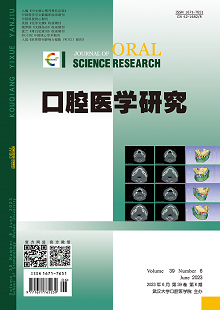|
|
Transcriptome Sequencing Screened Differentially Expressed Genes in Leuk-1 Cells under Paeoniflorin Condition
XIAO Lijun, CHEN Qianming, WU Yuqi, YANG Jiantang
2023, 39(6):
527-533.
DOI: 10.13701/j.cnki.kqyxyj.2023.06.012
Objective: To analyze the gene expression of Leuk-1 cells regulated by paeoniflorin based on transcriptome sequencing, to excavate and analyze key genes, to study the mechanism of paeoniflorin on Leuk-1 cells, and to explore its medicinal value. Methods: Transcriptome analyze were carried out on Leuk-1 cells in zero, low (5 μmol/L), and high (10 μmol/L) concentration groups. A series of different expression genes (DEGs) were screened, and the gene function and pathways of DEGs were annotated by Gene Ontology enrichment and KEGG enrichment analysis. Results: Among 1212 DEGs identified in Leuk-1 cells under the influence of paeoniflorin, Gene Ontology enrichment analysis revealed significant enrichment in immune response, humoral immune response, cytokine-mediated signaling pathway, 2’-5’-oligoadenylate synthetase activity, serine-type endopeptidase activity, extracellular space, extracellular region, endoplasmic reticulum, and other pathways. KEGG pathways enrichment indicated that DEGs were significantly enriched in Herpes simplex virus 1 infection, pathways in cancer, cytokine-cytokine receptor interaction, human papillomavirus infection, and other pathways. RT-qPCR examination of DEGs confirmed that accuracy of RNA-seq analysis. The role of paeoniflorin was mainly reflected in antiviral infection, tumor inhibition, protection of epithelial integrity, and immune regulation. Conclusion: The results of this experiment provided a reference to further study the molecular mechanism and provided clues to explore the prevention and treatment of oral mucosal diseases.
References |
Related Articles |
Metrics
|

